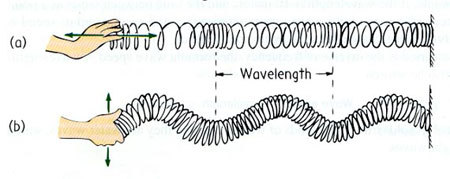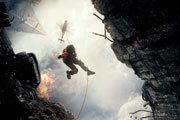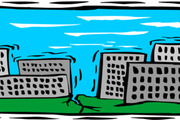Wanna do a REALLY COOL science fair project this year? Look no further than Mother Nature herself - she's been known to have some pretty bad days! This Amazing Natural Disaster project includes facts and info about earthquakes and the science behind them, an experiment you can do yourself and helpful suggestions for other things to research, make, draw, create and include in your project!
Earthquakes: Standing On Shaky Ground
Here’s the reason earthquakes centered in, say, Missouri, can sometimes be felt by people living as far away as New York: The rocky crust of our planet makes the Earth vibrate like a ringing bell. Translation: an impact anywhere will send waves shaking around the globe.
In fact, the Earth’s crust, which is made up of massive plates that jostle each other for position, is constantly shifting. Every time the plates shift and grind against each other they risk fracturing or cracking. When this happens, the rock plates release vast amounts of energy that’s carried outward in all directions by various seismic waves, some of which can reach the opposite side of the earth in about 20 minutes! The further the waves travel from the focus of the earthquake, the weaker they become.

Seismic Slinky
A Slinky makes a great model of earthquake waves – it can help you figure out what type of waves may send you rocking and rolling, and which ones may bounce you out of your chair:
- Stretch the Slinky 6 feet or more between you and a partner. Or, tie one end of the Slinky to a chair or other solid object 6 feet away.
- Pull the Slinky toward you a bit and then push it away. Notice that a wave travels along the Slinky from you to your partner. The vibrating parts of the Slinky move back and forth in the same direction as the wave is traveling. This type of wave is called a longitudinal wave or a compression wave, and it’s a model for seismic primary waves, or P waves. They’re known as primary waves because they’re the fastest of the earthquake waves, arriving first at distant points. P waves push and pull the underground rocks, causing structures on the surface to move back and forth.
- Shake one end of the Slinky up and down. Notice that a different type of wave travels along the Slinky. This time, sections of the Slinky move up and down, perpendicular to the direction in which the wave is traveling. This type of wave is called a transverse wave. It provides a model for S waves, the secondary seismic waves that travel through solid rock. (S waves can’t travel through liquid or gas.) More specifically, this models SV waves—S waves in which the vibratory motion is vertical. With SV waves, the shaking is in a vertical direction, which sometimes can be enough to launch you out of your seat.
- You can also shake the Slinky from side to side. In this case, sections of the Slinky will move horizontally; but, as above, the movement of the Slinky is at right angles to the direction of the progressing wave. S waves that behave in this manner are called horizontal S waves or SH waves. SH waves move the rocks beneath the earth’s surface from side to side, giving buildings on the surface a good shaking, often with very damaging effects.
- S waves and P waves are known as body waves. They transmit energy through the earth in all directions from the earthquake’s focus – the place underground where the temblor began.
- Push and pull the Slinky at the same time that you move it up and down; your hand should move in a circle. This circular-motion wave models an earthquake wave called a Rayleigh wave. Rayleigh waves transmit energy from the epicenter - the point on the surface that’s above the focus - along the earth’s surface. The slowest seismic waves, Rayleigh waves are rolling waves that make you feel as if you’re struggling to keep your balance on a ship in the open ocean.
- Hold two Slinkys, one above the other. Move them both from side to side at the same time, but move the top Slinky further in each direction than the bottom Slinky. This is a model of a Love wave. Like the S wave, a Love wave is a transverse wave, but like the Rayleigh wave, it’s confined to the earth’s surface. The bottom Slinky illustrates that the energy of a surface wave quickly diminishes with depth. Surface waves are long, slow waves. Love waves shake things from side to side.

Other Things To Include
You didn’t think we’d do all of the work for ya, did you? You’ll definitely have to do some legwork to make this science fair project complete. Here are some suggestions for what else you can do:
- Draw a diagram or build a model of the Earth’s seven massive plates, some of its smaller plates and name them.
- Research and describe the three styles that earthquakes come in: pulling apart, crashing directly into each other and grinding against each other side-by-side.
- Create a Before & After earthquake photo album to show the damage that can be caused by earthquakes.
- Check out the history behind earthquakes and discover different cultural theories and stories about why earthquakes occur.

Related Stories:
- Science Fair Project Idea: Amazing Natural Disasters :: Tornadoes
- Science Fair Project Idea: Amazing Natural Disasters :: Hurricanes
- Earthquakes 101
- Costa Rica Quake

































